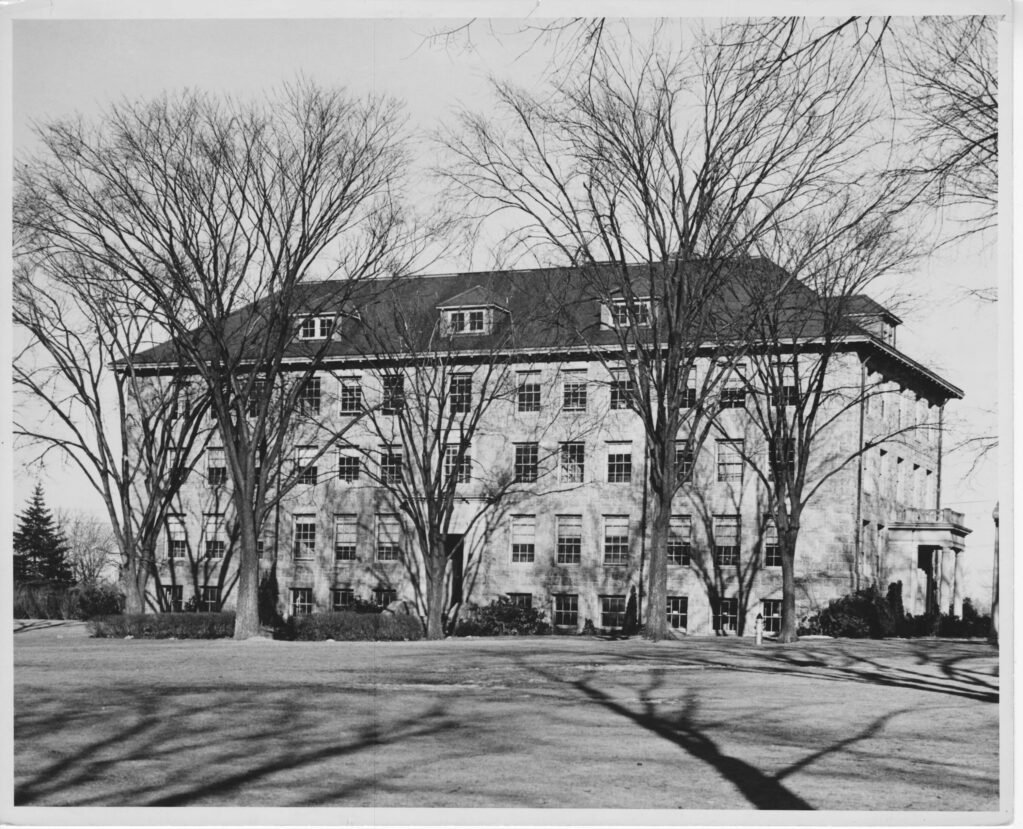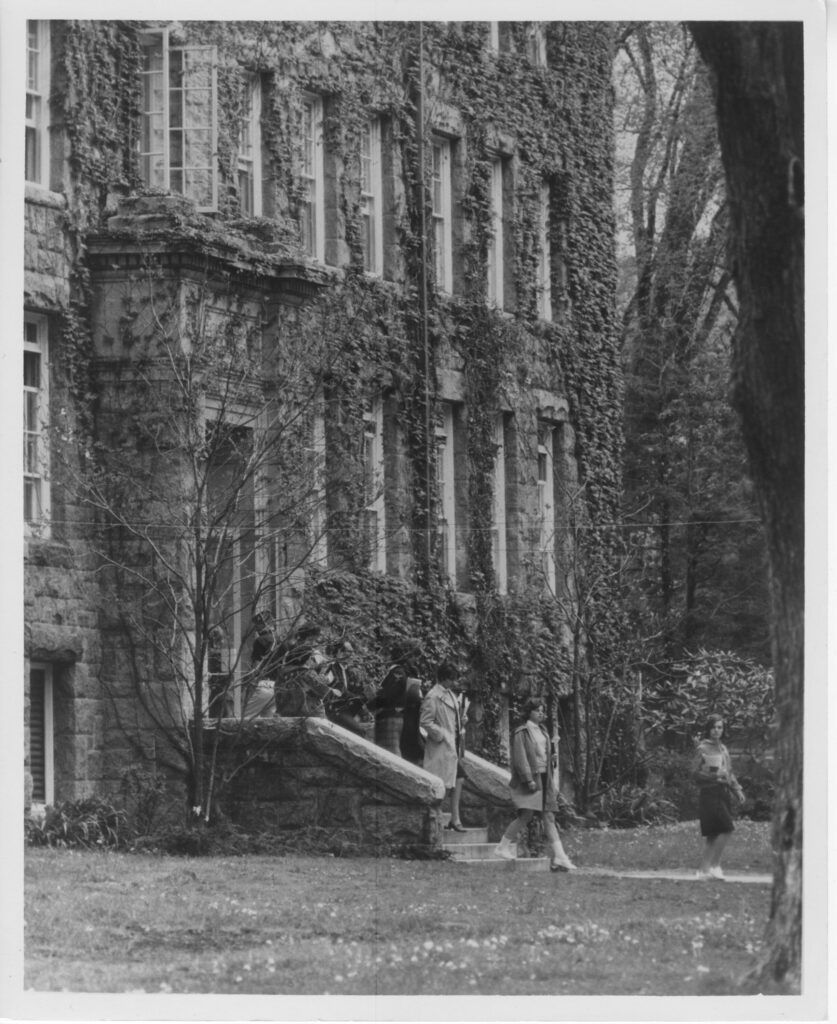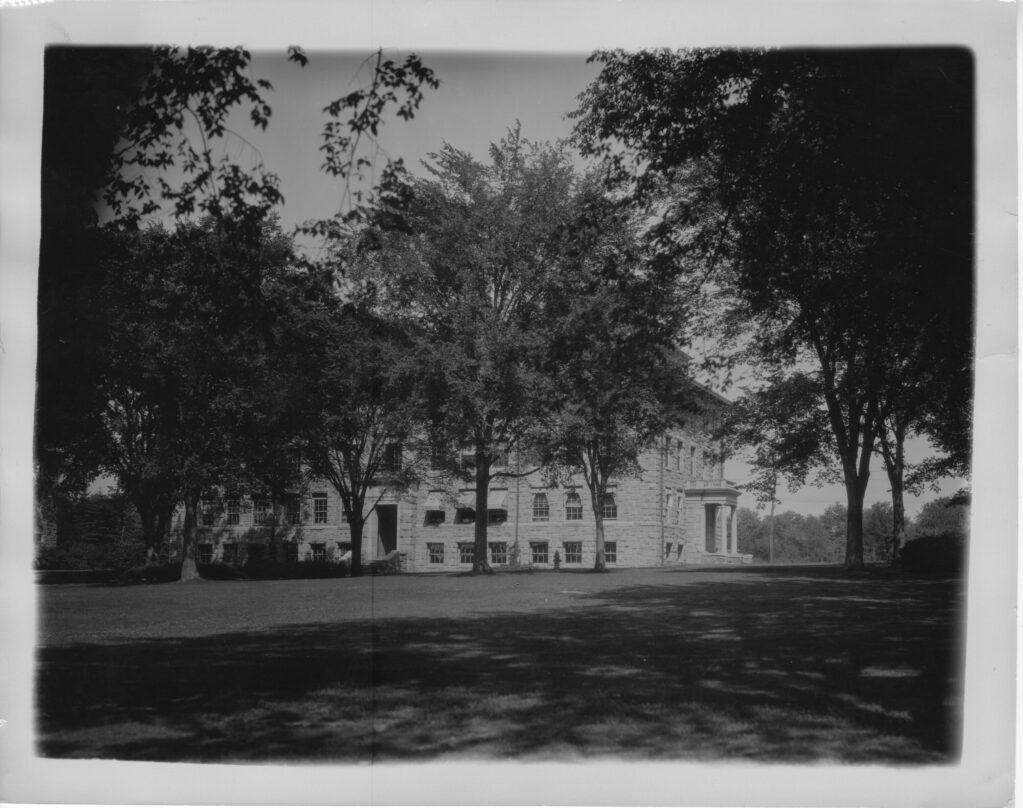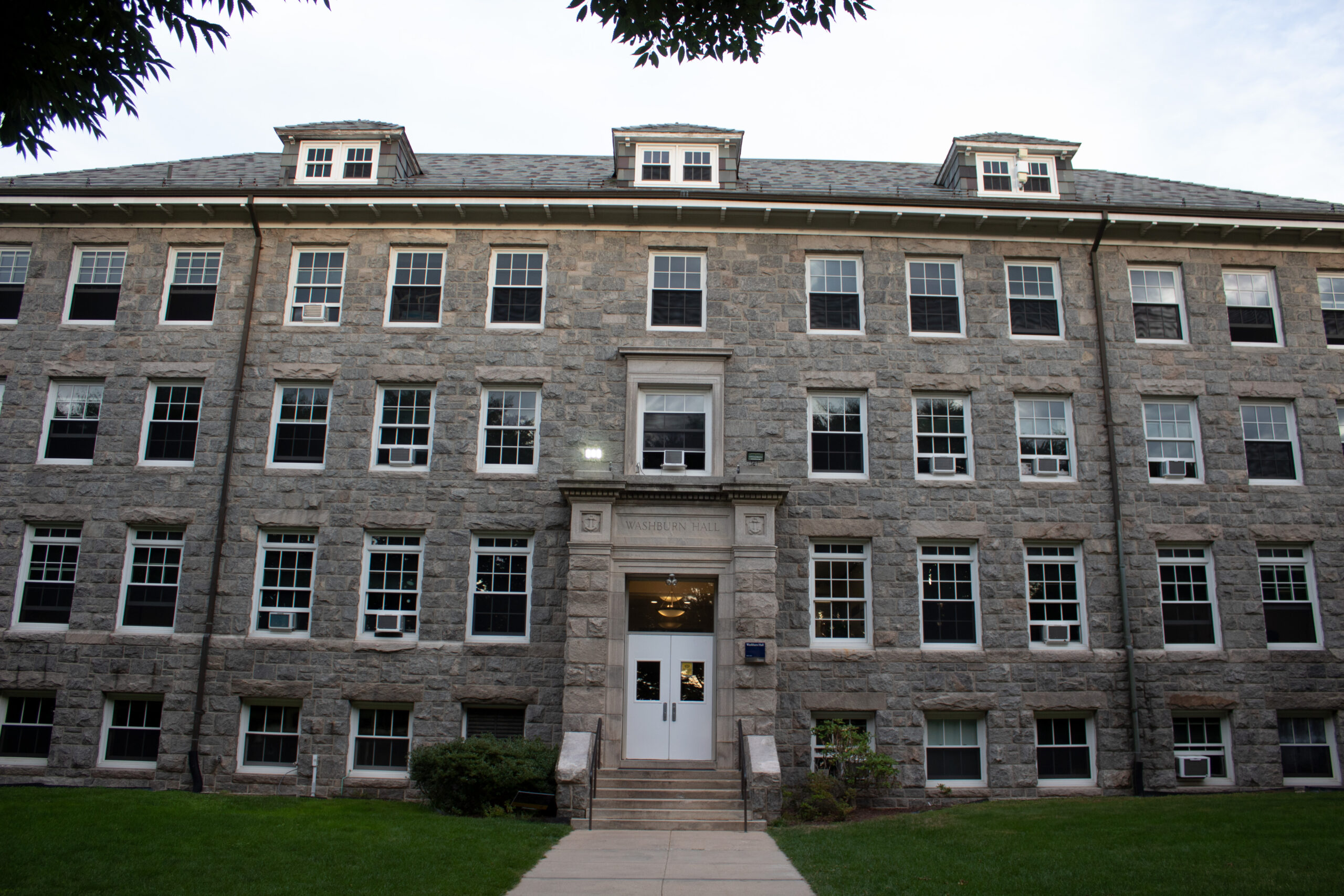Pictured: Washburn hall, home to Department of History and Political Science. PHOTO CREDIT: Hannah Charron | Staff Photographer
Like most buildings at the University of Rhode Island, Washburn Hall had a different name and purpose before becoming the current home for the history and political science departments.
“They started the planning for Washburn Hall before World War I so that was around 1914,” Catherine DeCesare, assistant professor in the department of History, said.
DeCesare explained that there was a delay, however, in planning due to the war and the Spanish Flu which occurred in 1918. This resulted in the building being completed in 1921.
“If memory serves correctly, I believe it was a bond issue that funded the building, and it was significantly over $100,000 to finish it,” DeCesare said.
In total, it took seven years for the planning, funding and final construction of the building to come to be, according to DeCesare. At the time of its construction, the building was named Agricultural Hall.

The name of the building was an homage to the land grant it had received. However, the grant was initially given to Brown University.
“The grant was awarded to Brown because it was the only institution of higher education,” DeCesare said. “So they were awarded the funds to set up this land grant college, but they didn’t really do too much with it.”
Due to Brown’s urban location in the middle of Providence, Rhode Island, the University was unable to utilize the funds to its fullest extent.
The grant, which was a federal program, was meant to support education in agricultural learning and methods and the science within agriculture and farming. This was vital in the post-Civil War era, as agricultural jobs and production began to decline in this time period.
“States were given land in the West that they could sell for money to raise money for a land grant college in the east or in other states,” DeCesare said. “The problem with it is they take land from Indigenous people in the West, and they sell it for profit to make the funds available.”
With the Morrill Act of 1862, Rhode Island was given 120,000 acres of land in Kansas. As mentioned before, Brown University received this land but failed to make full use of the grant which eventually led to a dispute in district court.

The final decision resulted in the University winning the legal battle and officially receiving the funds to support agricultural studies. URI was initially named Rhode Island College of Agriculture and Mechanic Arts when it was founded in 1892. In that same year, John H. Washburn became the first president of URI.
Eventually, the hall was named after the first president of URI and the building succeeded in its purpose. It was home to dairy poultry, chickens and the studies and sciences of agriculture and farming.
The basement of Washburn Hall also served as a school of dental hygiene at the time. Students were once able to get their teeth cleaned for free, and dental hygienists could also practice their skills in this area.
From Rhode Island A&M in 1892 to Rhode Island State College in 1909 and finally the University of Rhode Island in 1951, the campus changed in name and in size.

“I have a few classes in Washburn,” Nicholas Pollack, a senior double majoring in philosophy and political science, said. “It’s crazy to hear about the building’s history though it seems like every building here has its own past and story.”
Eventually, Woodward Hall became the new home for the College of Environment and Life Sciences. Today, Washburn Hall is home to the history and political science departments.

